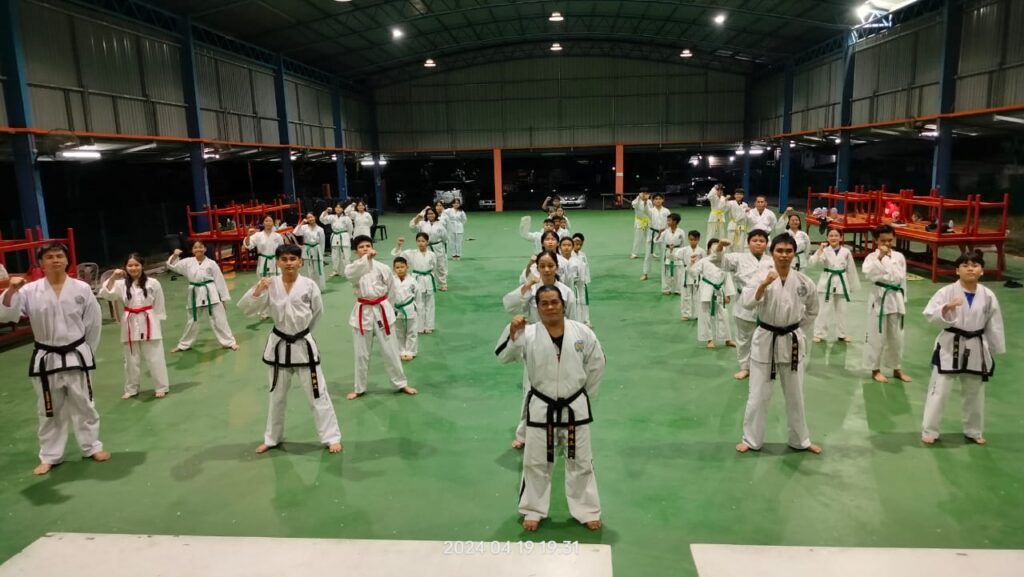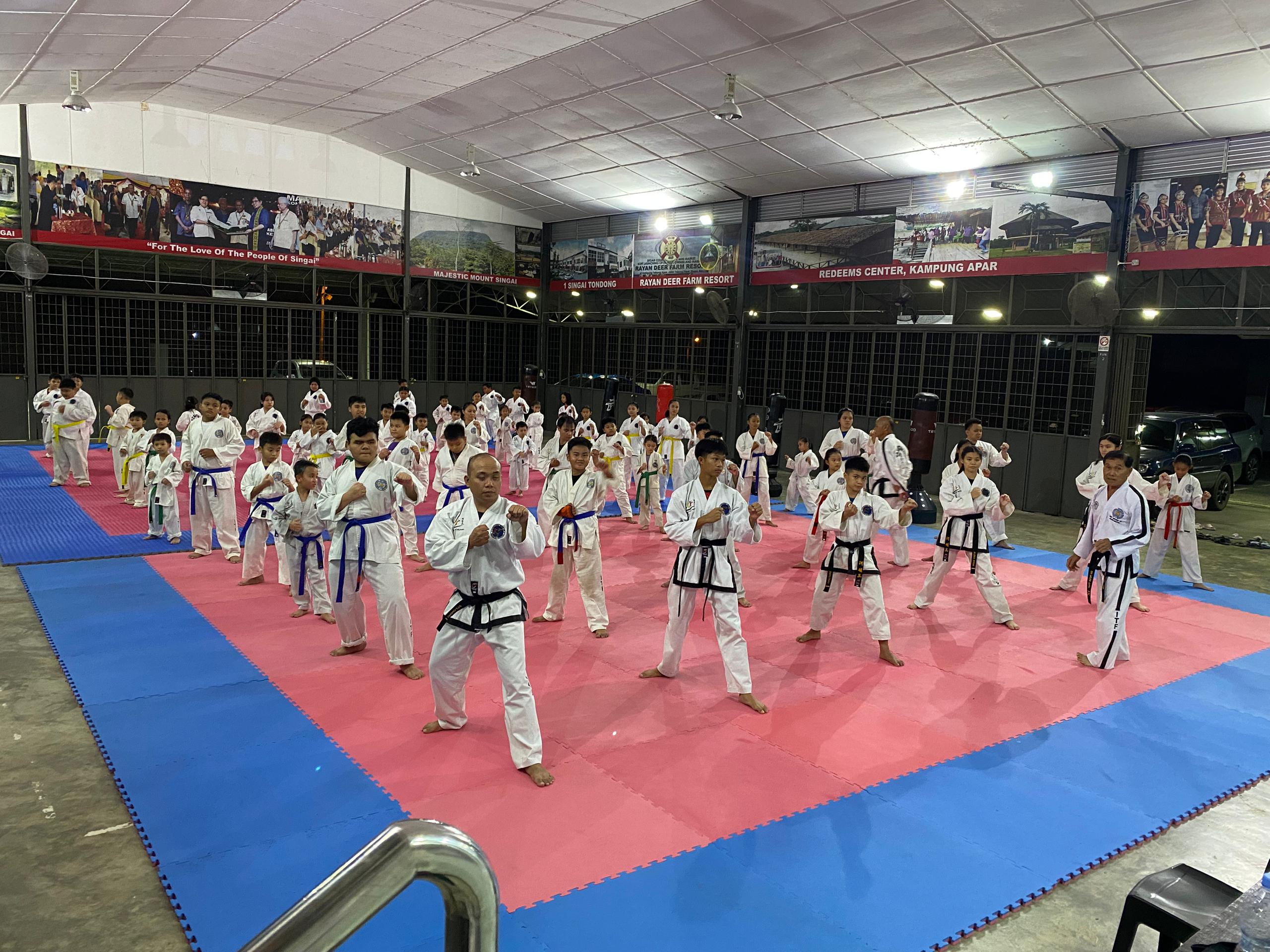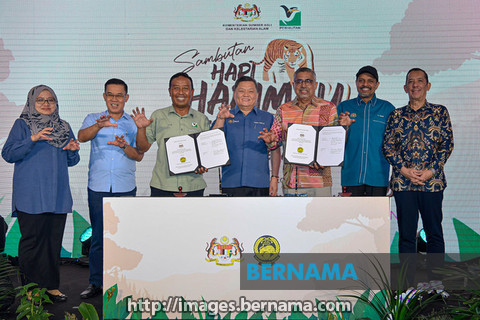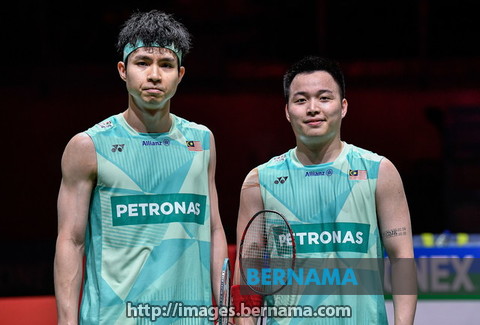THERE are many Bidayuhs in Bau, Sarawak who have a passion for International Taekwond-Do Federeation (ITF).

Grandmaster Peter Timik, for example, is one of the prominent figures in the Sarawak Taekwon-Do ITF, and has been recognised for his dedication and leadership in the sport.
He is actually the first ITF Grandmaster in Sarawak, having been accredited a 9th Dan Belt by the World ITF Taekwon-Do and Ally’s International Taekwon-Do Martial Arts Dojang, South Korea in 2018.
That is not all. Timik also received similar accreditation from the World ITF Taekwon-Do Council (WITC), United Kingdom on the same year and from the World Street Combat Systems Organisation (WASCO), Germany in 2020.
In addition to that, he has been appointed as director of International Chang-Hon Taekwon-Do Federation (ICTF) Malaysia.

Timik, 75, currently leads Sri Singai Taekwon-Do ITF, one of the independent Taekwondo ITF bodies in Sarawak registered with the Sports Commission Malaysia, and recognised by the international ITF bodies.
His promotion to 9th Dan is a testament to his lifelong commitment to ITF Taekwondo and his contributions and influence on the original taekwondo martial art, not just in Bau but in the region as a whole.
The Sri Singai Taekwon-Do ITF has been actively promoting taekwondo ITF in the rural areas and celebrating its practitioners’ achievements on its sport side.
Timik’s recognition is a source of pride for the local community and inspires others to pursue their passion for ITF Taekwondo.
Individual like Timik plays a vital role in mentoring and guiding the next generation of ITF practitioners not just in Bau, but in the rural areas as a whole.
In an interview with Sarawak Tribune, Timik said he took up ITF taekwondo in 1972 when he was in his 20s, and the following year he obtained his1st Dan Black Belt.
Taekwon-Do instructor
After that, he served as an assistant instructor, handling training sessions mainly in schools around Kuching, and eventually upgraded himself until he got the 9th Dan from three international or world ITF taekwondo bodies.
“Since before, the response towards ITF taekwondo among the young people in Kuching has always been very good.
“I started teaching ITF taekwondo classes mainly in secondary schools in Kuching. After I retired from Kuching Port Authority, I started to promote ITF in the rural areas, mainly in Bau.
“The response in the rural areas has been very encouraging. Aside from Bau, today we are also handling some centres in Serian and Penrissen, including one at SMK Tarat and one at Kampung Bowang, the latest addition,” he said.
Timik however, expressed concern about insufficient instructors to handle more centres, adding that starting a new centre shouldn’t be a problem for him.
He said while every centre would have its own committee to manage it, it needs to have qualified ITF instructor from the main centre to handle their training sessions.
“For now, we only have over 10 qualified instructors whom we can send out. Right now, we are still recruiting some dedicated practitioners to be upgraded to instructors and to be roped into our manpower.
“By having more instructors we can help other areas to set up their centres and handle their training sessions,” he said.



Why ITF?
Asked why he had preferred ITF than World Taekwondo (WT), formerly World Taekwondo Federation (WTF), Peter said when he first took up taekwondo in 1972, there was no WTF.
“WTF was formed in 1973, if I’m not wrong. I was also being invited by the instructor before to join them but I preferred to stick to the original taekwondo.
“ITF is the original taekwondo, which places a strong emphasis on traditional martial arts principles, including self-defense techniques, philosophical aspects, and patterns (tuls),” he said.
Aside from that, Timik said practising ITF taekwondo techniques correctly and regularly could bring many benefits, including naturally achieving healthy body, mental strength and flexibility.
He said ITF is the original taekwondo martial art that aims for holistic development, encompassing physical, mental, and philosophical aspects; it can be practised regularly by everyone, regardless of their age, good for body and mental fitness.
“For me, the longer I am involved in it, practising and instructing it, the more comfortable I feel because it truly brings a lot of benefits to me in terms physical and mental health.

“At this age, I still feel strong, energetic and alert both physically and mentally. I just enjoy every moment I’m in it and every training session I’m conducting,” he said.
Timik acknowledged that ITF differs from WT, in which the former is a martial art with a strong emphasis on both physical fitness and mental discipline, deeply rooted in the philosophy of General Choi Hong Hi and latter is a sport taekwondo.
He said the ITF do have the sport side that has its own system, but the competition is not so much for personal glory; it’s a platform to showcase the skill and passion of ITF taekwondo practitioners as well as for exposure.
He said more often than not, the Sri Singai Taekwon-Do ITF and other clubs under their supervision simply stick to the original idea to also enable senior citizens to practice ITF.
“The difference between ITF and WT is that ITF is a martial art that incorporates more on hand techniques while WT is purely sport, incorporating more on leg techniques.
“WT is good for sport achievements and in making names for the state and the nation internationally.
“I personally think taekwondo is similar to silat, where seni silat is for sport and the original silat is for martial art. So we cannot say this one is good or that one is bad. It’s simply a matter of an individual choice,” he said.


Passion and dedication
Timik said he stuck to the original taekwondo not only for self-defense but also because it is beneficial to the body and can be practised by senior citizens like him.
“In fact, whatever thing you love to do, just keep doing it until the end. Whatever you aim for, if you do it with passion and dedication, it can be done…it can be achieved.
“I’m still actively involved in ITF until now because I have a passion of doing it. I will keep doing it, promoting it in the rural areas and help others in terms of providing training and upgrading to the practitioners as long as I have the strength to do it.
“Age is not a barrier for me. I am a grandfather now, and thank God, I still can practise and teach this martial art,” he said.

















